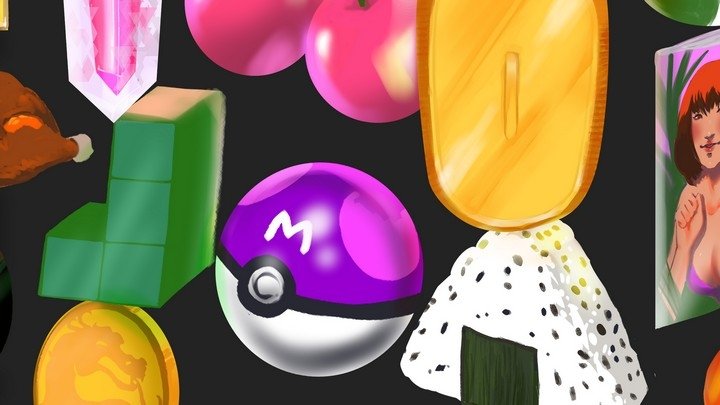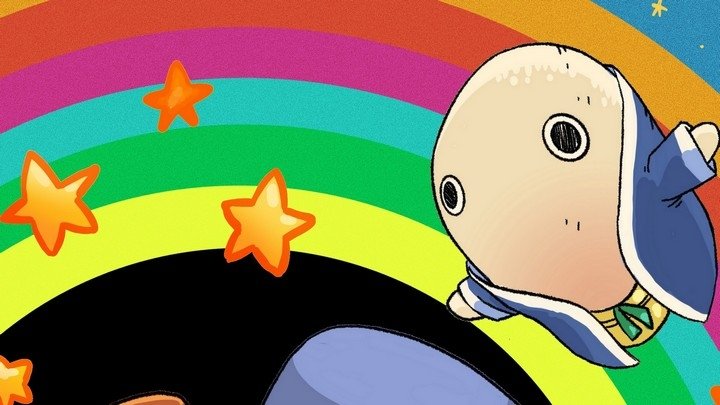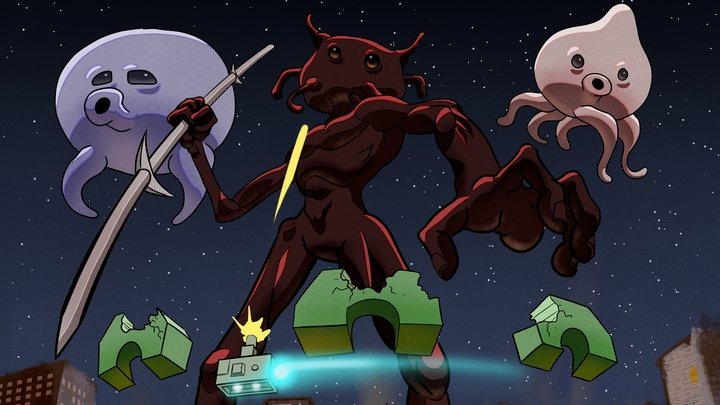Racing against collector creep
I've just returned from a trip to Japan to cover BitSummit for my pals at USgamer. (You can check out the roughly one dozen developer interviews I conducted there on my USgamer author's page — it doesn't look like they've put together a tag or landing page for BitSummit yet.)
Naturally, while I was over there, I did a bit of hunting for classic games in Tokyo's retro gaming shops. You know... for work.
Contrary to many recent alarmist reports I've seen recently, Tokyo's retro game stores aren't completely a desolate wasteland of empty shelves. A few spots in nerd destination Akihabara definitely do have a sort of post-apocalyptic feel to them, but that really only holds true for the the heavily trafficked ones that everyone picks over... primarily Super Potato, and to a lesser degree the Mandarake Galaxy shop in Nakano. Venture away from the better-known shops, however, to places the tourists never visit — and it's very much tourists (like me, I admit) who are the cause of this desolation — and you can find shelves packed with every game imaginable, often at reasonable prices. There's one particular gem of a shop in Akihabara that doesn't seem to have become despoiled yet; stock remains ample and, miraculously, prices feel like they were set five or even 10 years ago.

At ¥2600 ($23), Mighty Final Fight makes for a charming little frivolity; at $200, it becomes a symbol of the dystopian hell that classic game collecting has become.
But such places have become vanishingly rare, because as I mentioned, we tourists keep picking them over. I won't really accept that much personal culpability myself, though; I'm not much of a collector, and the hard-to-find import games I do hunt for these days tend to be the ones that no Western collector would ever want, e.g. complete Game Boy games to document. ("Ah yes, now that I'm in Akihabara I can finally pick up that complete copy of Card Game for Game Boy," said no one ever.) But serious collectors have swooped in on Japan's shops to snatch up everything interesting they can find, a situation that's only increased since the yen dropped in value versus the dollar and euro a few years back. Prices on old games have begun to swell in Japan in response to the dwindling supply and growing demand.
I've noticed a sort of chain reaction effect on the order in which prices inflate. The first to balloon were the games that had already climbed in price even back when the yen was crushing the dollar a decade ago after the international housing market collapse: The hard-to-find Japan-only releases. Games produced in modest qualities here and never localized into any other region. Famicom games like Recca: Summer Carnival ’92 and Moon Crystal, or Saturn releases like Psychic Assassin Taromaru, Radiant Silvergun, and so forth. These games shot up in price years ago, because both Japanese and foreign collectors sought them out and demand greatly outstripped supply.
After that, I noticed inflation in games that had received international releases but were in some way remarkable in their Japanese iterations. For example, Castlevania: Symphony of the Night appeared in the west, but the original Japanese release came in a deluxe package containing a soundtrack CD along with a booklet packed full of concept art and a short original manga by illustrator Ayami Kojima. While the price of the U.S. release for that game has definitely crept up over time, it's eclipsed by the premium its highly coveted import version commands. Likewise, the original Contra has been quite pricey on Famicom for quite some time, because the Japanese release contained enhanced graphics and sound over its American counterpart, making it a prize for serious fans of the series. Ninja Ryukenden III has become the most expensive Japanese Ninja Gaiden title for Famicom by a fair margin, most likely because Tecmo screwed up the balance of the American version and the Japanese release is the only version that's actually fun.

Psychic Assassin Taromaru. You will never play this Saturn game legitimately, in part because it never came to the U.S., and in part because it now goes for about $500 (if you can even find it). Image credit: Hardcore Gaming 101
Interesting variants have also inflated considerably. The first Castlevania for Famicom (aka Akumajou Dracula) now sells for more than $100 as a bare cartridge; the game originally shipped on diskette, and the cart release (which is basically the same as the U.S. cartridge but for the outer shell) came along later and in smaller quantities. The disk version has begun to creep up in price, having nearly doubled in value over the past couple of years, but you can get that edition complete in its full packaging for half the price of the naked cartridge.
More common import-only games have been hit of late, as well; they've more or less doubled in price (sometimes tripled) in the past few years. These games weren't particularly rare in Japan, but because they only showed up in Japan, they became desirable for foreign collectors. Not all import-only games bear this burden, of course. Very few text-heavy RPGs or pachinko games sell for a hefty sum; instead, it tends to be the more accessible releases that have been hit by this. Action games, generally, or fighters, or shooters. Especially those with a connection to popular franchises or beloved developers, or on niche platforms. And you don't even want to know about the bloodbath that is PC Engine and SEGA CD pricing, even for common releases.
And most recently, many games that saw international releases have been hit hard, presumably due to fans determined to own every variant of a beloved favorite. The EarthBound series is a great example: The American version of EarthBound hit the stratosphere more than a decade ago, but until recently its Super Famicom counterpart was priced to move; if you paid more than $20 for a complete Mother 2 in Japan three years ago, you were doing it wrong. Now, even those incredibly common and heretofore undesired Japanese carts have edged their way toward the $50 mark as dedicated fans work to complete their comprehensive shrines to Shigesato Itoi's great creation.

Would you pay ¥44000 ($400) for a video game? I personally would not. But it sure beats the U.S. equivalent's selling price of $2000+.
Personally, I gave up on chasing basically all of these things a while back. As much as I enjoy picking through the shelves of a Tokyo retro gaming shop, prices on all the interesting stuff went stratospheric years ago. So, I decided a few years ago to limit myself to hunting for a very limited selection of games for my personal collection: Notable (but not necessarily rare) games that didn't see release in the U.S., and affordable Japanese versions of games that have become impossibly expensive in the U.S. Three or four years ago, I realized that I will never own late-era NES releases like Power Blade 2 or Little Samson in their American incarnations, but their original Japanese versions — while not necessarily cheap — were at least affordable.
Now, even that's drying up. Some of the games I picked up in 2013 or 2014 (for example, Seirei Densetsu Lickle and Captain Saver, the Japanese versions of the aforementioned Little Samson and Power Blade 2) are now selling for two, three, even four times as much as I paid for them a fairly short while ago. So my goal for my recent trip was to hunt down Japanese versions of some notable big-ticket NES releases before those, too, blast through the roof. I had some pretty decent success, spending about $150 for the Famicom editions of four big-ticket late NES titles. That's not cheap, but the combined average sale prices of these four titles in their U.S. incarnation would clock in around $1100. And I have a sneaking suspicion that I'd probably be paying well more than $150 for this set of games a year from now.
All of this really bums me out, honestly. For years — decades, honestly — I loved being able to casually pick up old used games for a few bucks as the whim struck me. Between collector speculation and a renewed interest in the actual physical editions of classic games (thanks in large part to the advent of cart-based retro consoles like the RetroN, RetroFreak, and Analogue Nt), those days are long past. It's still possible to find good classic games on the cheap, for sure, but it seems as though each passing month reveals some new game whose sticker price has begun to climb due to a YouTube show or even conscious price manipulation. Some optimists believe the collector's bubble will eventually burst, but even if price-creep slows, it'll never reverse to where it was in, say, 2007. Once everyone caught wind of Stadium Events selling for $20,000, it was all over.
So it goes. In any case, I'm eager to get some value out of my pick-ups — I'm not collecting for the sake of owning stuff, after all. So feel free join me tomorrow morning for a Famicoffee stream (the caffeinated morning counterpart to Gintendo!) as I put the first of these budget-friendly acquisitions through its paces: F.C. Genji, aka Bonk's Adventure... a Famicom game that costs about 1/20 what its NES counterpart does. In the words of the late Paul Harvey: That's... true value.



